[Quiz] Basic Business Manners

This post is also available in 日本語
In Japan, there are many examples of unique business etiquette. On this occasion, we have created a quiz to test your knowledge of basic business etiquette. We hope you enjoy taking on the challenge!
Contents
[Bowing]
What is the correct angle for a bow when greeting your colleagues?

Correct answer: A
It depends on who you are greeting. When you greet your own colleagues, you only need to bend your upper body gently, in a bow called an “ESHAKU”.
[Bowing]
What is the correct angle for a bow when greeting a customer?

Correct answer: B
When greeting a customer, you should lower your head more deeply than an “ESHAKU”.
[Bowing]
You have made a customer angry by making a mistake. What is the correct angle for a bow when apologizing?
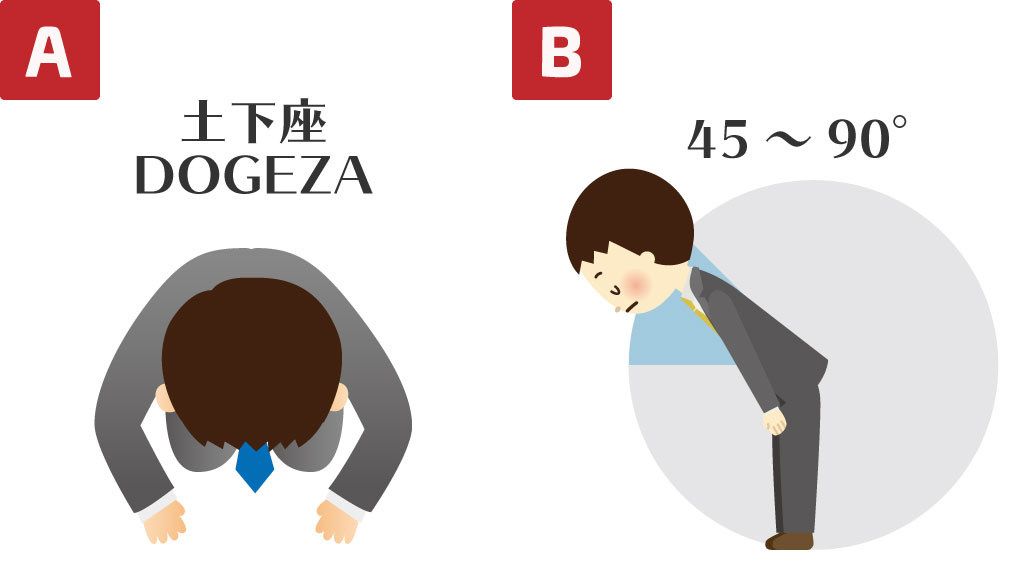
Correct answer: B
In Japan, there was an age where people performed “DOGEZA” (kneeling on the ground and lowering your head as if to attach your face to the ground) or “DANPATSU” (shaving one’s head to apologize) to express acts of greatest penitence. However, these days they are rarely performed.
[Time for appointments]
You have an appointment at 10AM. How many minutes before the appointment should you arrive?

Correct answer: B
Of course, you should never be late, but it is not a good idea to be too early either.
[Time for appointments]
You are running late for your appointment. When should you contact the other party?
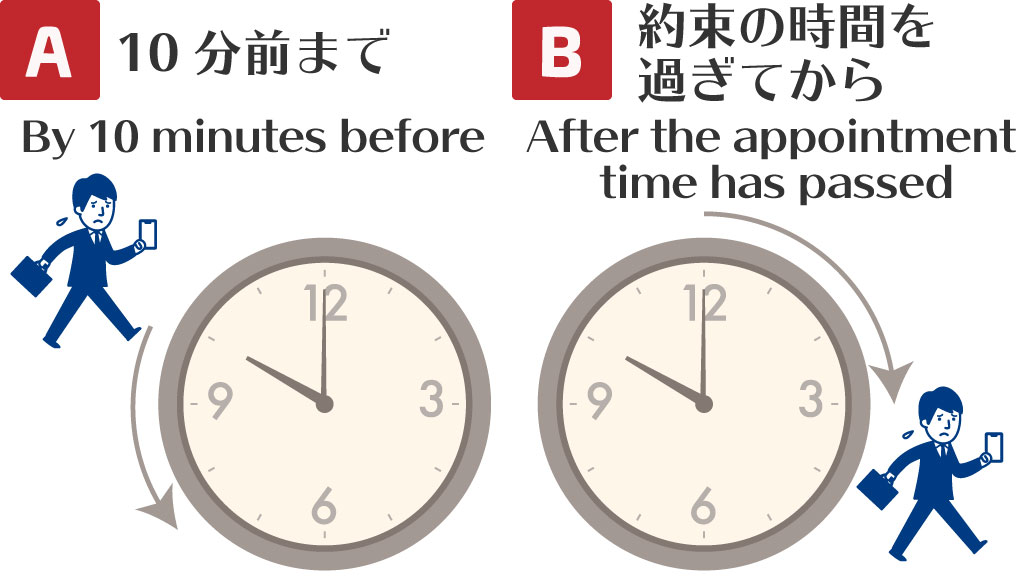
Correct answer: A
Contact the other party at least 10 minutes before the appointment time, apologize, and communicate the time you expect to arrive.
[Position]
Generally, is the “SENMU” or “JOMU” higher in rank?
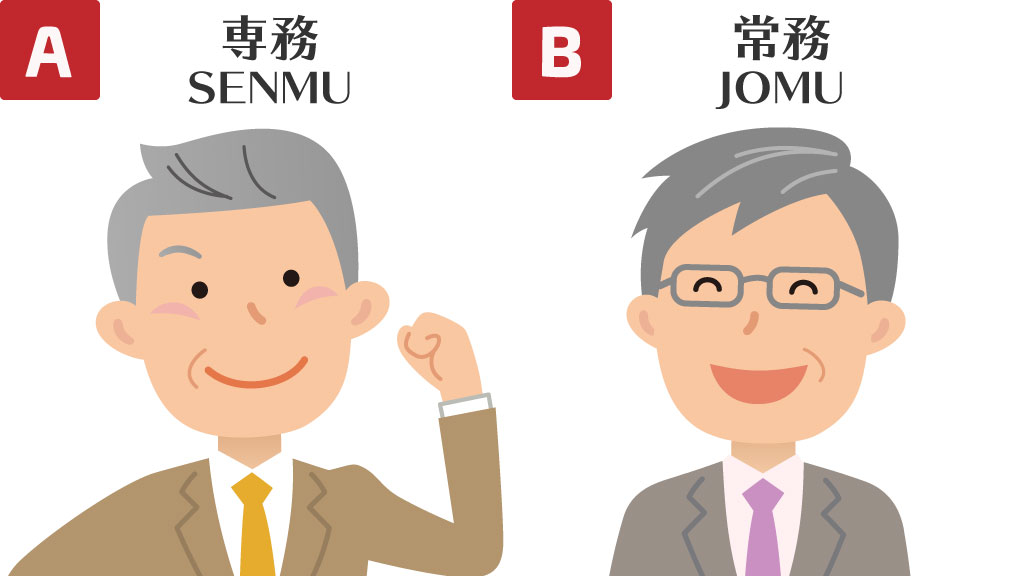
Correct answer: A
It differs depending on the company, but generally the SENMU is of higher rank. Both act as advisors to the President, but the SENMU is more of an advisor on the business side, and JOMU tends to be an advisor on the practical side.
[Position]
Generally, is the “BUCHO” or “JICHO” higher in rank?

Correct answer: A
JICHO refers to the “Next position with responsibility in the department”. For that reason, they have the position next to the BUCHO in the department. In a factory, they are next after the KOJICHO, and in a sales office, they are next after the SHOCHO.
[Naming]
What is the more appropriate way to refer to yourself during an interview?

Correct answer: B
In Japan, there are various ways of referring to yourself. “WATAKUSHI” can be used in all business scenarios, and gives a formal impression. “WATASHI” is also an expression that is easy to use, but gives a more casual impression. “WATAKUSHI” and “WATASHI” are both written using the same kanji character.
[Naming]
What is the appropriate word to use to refer to your own company when talking to customers?
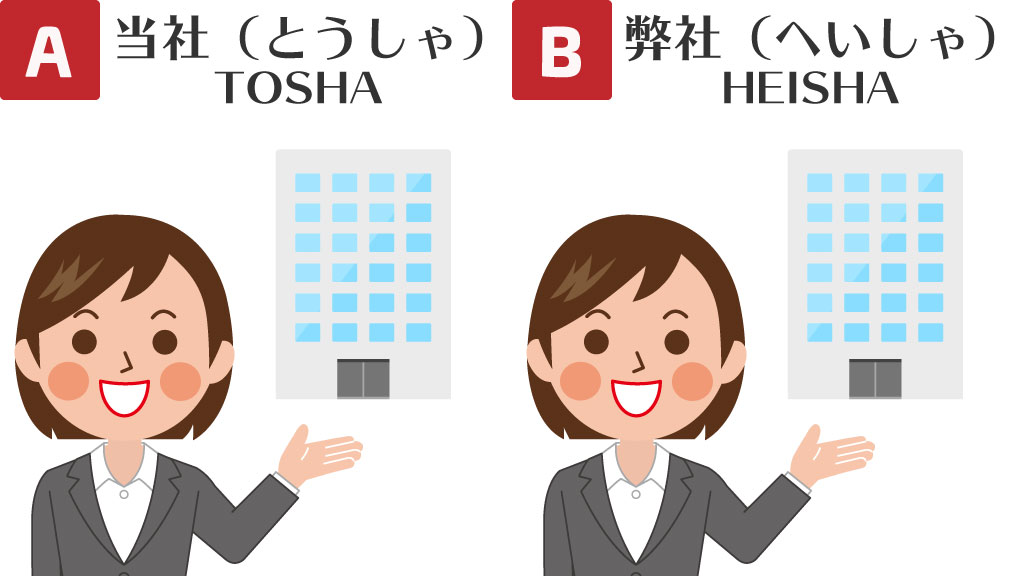
Correct answer: B
In Japan, there are various words to refer to your own company. When talking to customers, the humble word “HEISHA” is used.
[Naming]
What is the appropriate word to refer to the other company in an email sent to a customer?

Correct answer: B
Both are honorific words to refer to the other company. In the written word, “KISHA” is used. In conversation, the word “ONSHA” is used.
[Naming]
In ordinary companies, what honorific is appropriate to use when sending emails to your colleague Yamada?

Correct answer: A
“SAMA” is an honorific that can be used to refer to all other parties in either conversation or written form. “DONO” is only used in written form. For personal communications, “DONO” is used by a higher rank person in relation to a lower rank person. This rule is misunderstood, and currently, there are people who think that “using DONO is rude” even in business. Therefore, it is probably best to avoid it. However, “DONO” tends to still be used in documents, such as those from government offices etc.
[Exchange of business cards]
Which of the following is the appropriate way of handing over a business card?

Correct answer: B
In Japan, business cards are very important. You should place it neatly on top of your business card case and hold the business card out with both hands. (Currently, exchange of business cards is being avoided in some cases as a measure against the spread of infection.)
[Exchange of business cards]
What is the correct orientation of the business card when you present it?
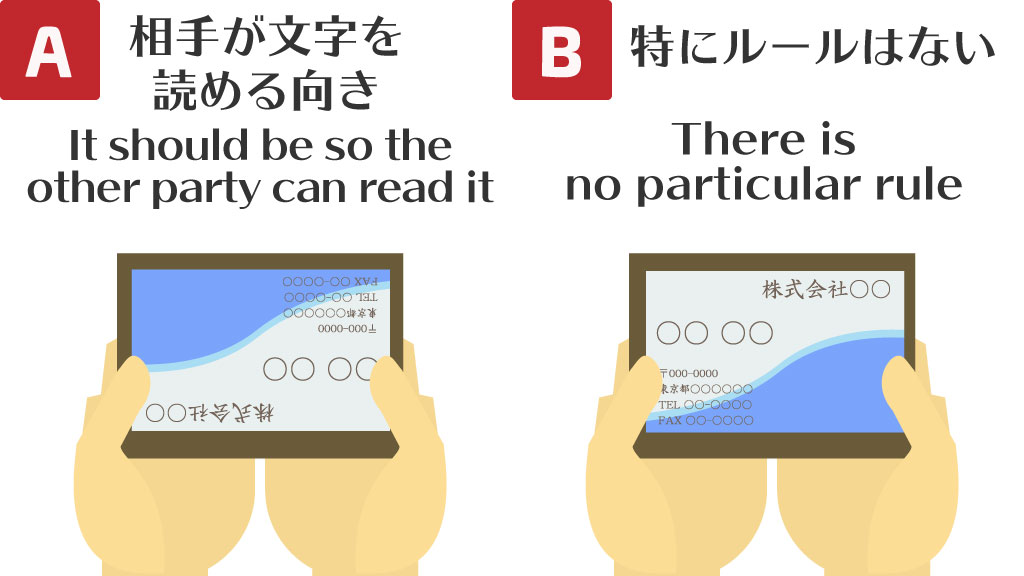
Correct answer: A
Hold out the business card so it is facing the way in which the other party can read it, and pass it over while saying the name of your company and your own name. (Currently, exchange of business cards is being avoided in some cases as a measure against the spread of infection.)
[Web meeting]
Which of the following ways of dressing is appropriate?

Correct answer: B
Basically, whether the other party to the meeting is internal or external to your company, you should participate in the clothes you would normally wear if you met face-to-face. For an internal meeting, you might like to check in advance.
[Web meeting]
If you wish to indicate “I am listening. Please proceed”, which of the following ways of indicating this is correct?
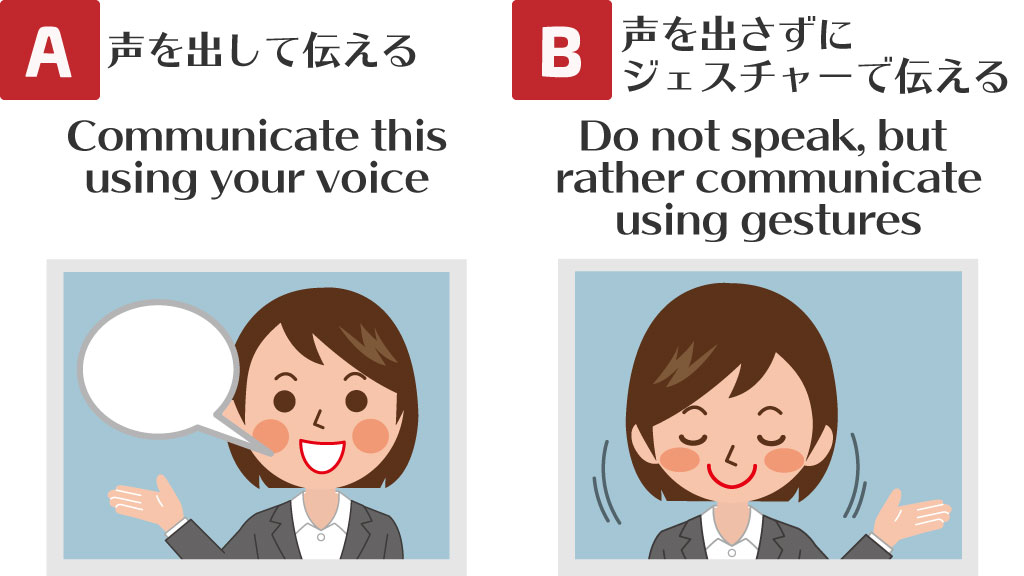
Correct answer: B
If you give vocal feedback while other participants are talking, you will interrupt them. You should keep your microphone on mute other than when you are speaking yourself, and give communicate your feedback through gestures.
Reference:
“Business etiquette to avoid you becoming embarrassed when working” – Nihon Keizai Shimbun Publication, 2016
“Basic encyclopedia of business etiquette” , Ikeda Shoten, 2016
Dropbox “Web meeting etiquette”
- Will You Get a Perfect Score? Test Your Knowledge of Japanese Dining Etiquette!
- Can You Answer All The Questions?[Résumé Quiz] – Reasons For Applying, and More (Part 2)
- Don’t Make These Mistakes! 6 Important Business Manners at Work
- How Many Can You Answer? [Résumé Quiz] – Pictures, Information, and More (Part 1)
- [Explained by a Legal Professional] Points to consider when you wish to work in Japan









